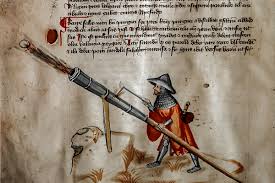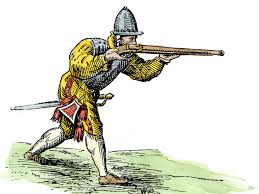Your basket is currently empty!
Introduction
The year 1326 marks a watershed moment in military history: the construction of the first gunpowder rifle. This early firearm signaled the transition from traditional weapons like bows and crossbows to explosive firearms. In medieval Europe, warfare had relied on siege engines and hand-to-hand combat for centuries—until the arrival of gunpowder. This article explores the rifle’s invention, mechanics, and long-term influence on tactics and societies.
What Was the 1326 Gunpowder Rifle?

The earliest descriptions of this rifle-like weapon come from an English legal record dated 1326, referencing “tubulum ad faciendum bombarde” – essentially a tube for firing bolts or stones with gunpowder. Although no physical example survives, the language suggests a handheld firearm prototype. Historians believe it used a small amount of early black powder, ignited through a touch hole. This makes it among the first true firearms, predating later cannons and arquebuses. Despite its crude design, it paved the way for the military revolution that followed.
Design and Mechanics
The rifle likely consisted of a metal or reinforced wooden barrel, capable of holding the projectile and a small powder charge. Rudimentary ignition would come from a heated iron rod or lit fuse. It lacked rifling or standardized calibers, making accuracy and rate of fire unreliable. Nevertheless, the psychological impact was significant: the thunderous sound, smoke, and deadly force outclassed arrows and bolts. This early firearm foreshadowed future developments like the matchlock, wheellock, and flintlock systems.
Tactical and Military Impact
Initially, firearms were used to defend forts and castles where precision was less important than intimidation. Over time, infantry incorporated these weapons into formations, introducing volleys and later integrated musketeer tactics. The existence of such weapons in the 14th century prompted military thinkers to reconsider battlefield roles. Gunpowder made armor and traditional defenses obsolete. By the 16th century, firearms had become standard military issue, transforming European warfare and expanding empires.
Broader Consequences
Beyond the battlefield, firearms affected society and politics. Nobles and knights lost their battlefield dominance. Centralized states could equip standing armies more effectively than feudal lords. Gunpowder also enabled Europeans to colonize distant lands, fueling the Age of Exploration. Technological and economic power shifted in favor of those best able to produce and supply these weapons.
Legacy and Evolution
While the 1326 firearm was primitive, its lineage leads directly to powerful late-medieval weapons. Innovations like rifling, percussion caps, breech-loading systems, and metallurgy advanced rapidly over centuries. Today’s high-tech rifles are distant descendants of that medieval tube. Firearms continue evolving—smarter, more accurate, and more lethal—with roots anchored in early innovations like the 1326 gun.
Conclusion
The 1326 first gunpowder rifle marks a pivotal moment in military history. Though primitive, it changed warfare forever and set humanity on a path toward modern combat. Understanding this invention lights the way through centuries of military and political development.
Explore more historical war machines on our War Machines site.

